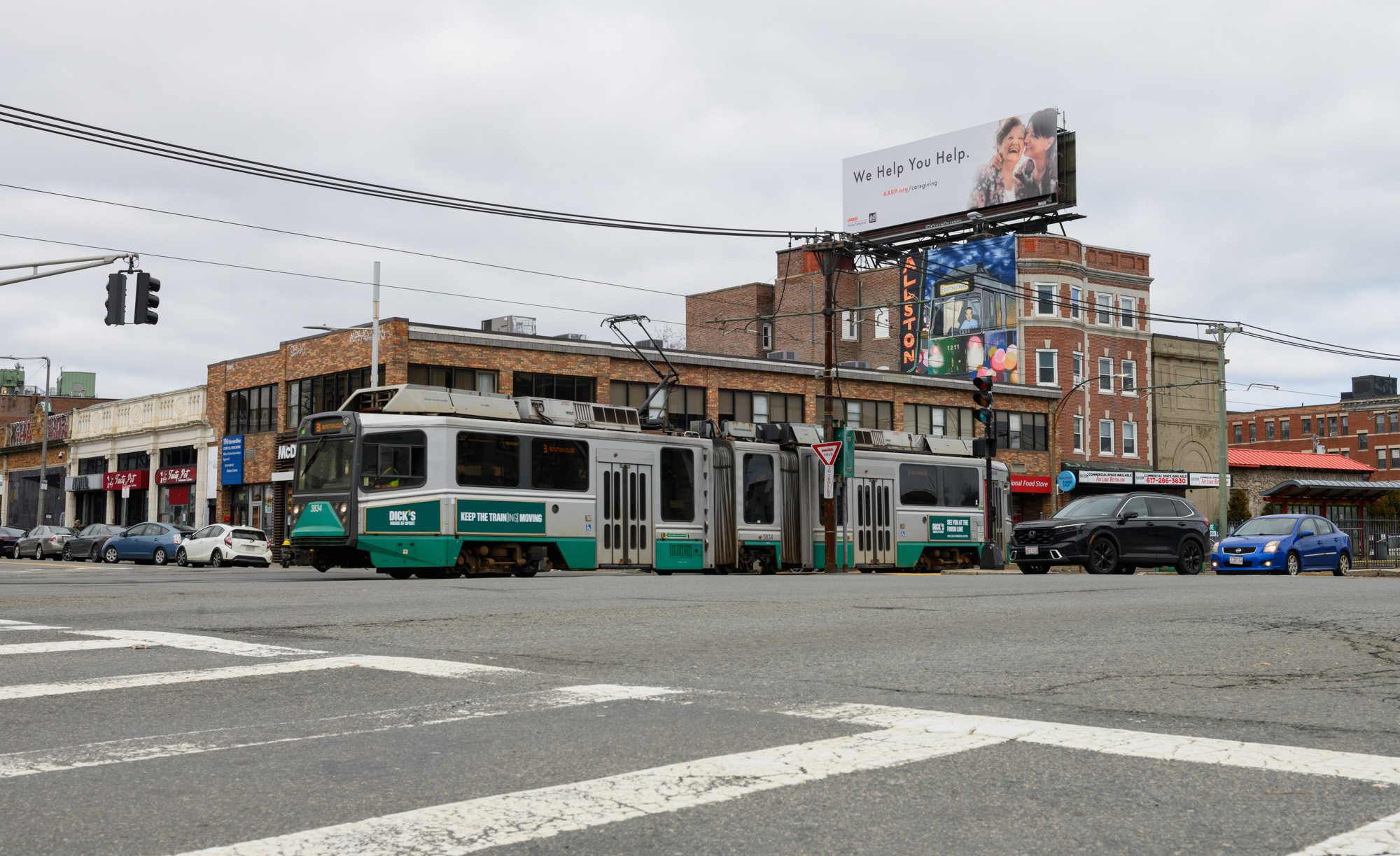Lack of tree coverage and rising sea levels across Boston have led to extreme heat and flooding in the Allston neighborhood.

Since the beginning of the 20th century, temperatures in Massachusetts have increased by 3.5 degrees Fahrenheit, according to a 2022 report from the City of Boston. Over the past decade, hot days were hotter and high and low daily temperatures were higher compared to the 60-year decade average.
The 2022 report emphasized the importance of “urban tree canopy to help stay cooler in hot weather,” which is limited in Allston.
“The tree canopy is one of the best ways that we can protect our communities against extreme heat by providing shade,” said Hessann Farooqi, the executive director of the Boston Climate Action Network.. “But Allston has less … tree canopy than other neighborhoods, like Back Bay right next door.”
Jamie McGonagill, the media and messaging director of Extinction Rebellion Boston, explained how trees have been particularly vulnerable to the effects of climate change.
“Trees aren’t able to rapidly adapt to the extreme shifts in heat caused by climate change and this is causing local species to die,” McGonagill said. “Sugar maples used to be prolific around Boston, [but] in the past 100 years they’ve been in serious decline because of the rising temperatures.”
McGonagill also explained that salinity levels in the soil are rising due to sea level rise, as well as stormwater flooding.
“As the water gets higher, the salt from sea water gets into the soil, and that will kill off trdaees,”McGonagill said.
The lack of tree coverage in Allston has contributed to extreme heat in the neighborhood. Sarah Iwany, a member of the Allston Civic Association and Allston Brighton Health Collaborative, said Allston-Brighton is “one of the hottest neighborhoods in the city,” reflected in city-wide heat analyses.
“If you look at heat maps, you’ll see that we have a ton of heat islands here,” Iwany said. “As the temperatures increase, those get more and more intense.”
Extreme heat “puts everyone in the [Allston] community at a greater risk of different health challenges, like heat stroke,”Farooqi said. Tree coverings have also exacerbated racial and social inequities, which the city has attempted to combat through its Urban Forest Plan released in September 2022 with specific recommendations for Allston-Brighton.
Stormwater flooding is another implication of climate change that has impacted Boston, a concern for Allston exacerbated by its proximity to the Charles River. McGonagill said the heavier rainfall Boston experiences is more than the city’s infrastructure was designed to handle.
According to the National Oceanic and Atmospheric Administration, the sea level in Boston has increased by 8 inches in total since 1950. Over the last decade, Boston’s rise in sea level has accelerated to rising by about 1 inch every eight years.
Iwany said the concern of flooding has become a primary issue for the Allston neighborhood.
“More recently, the problem with these crazy heavy rainstorms we’ve been having is that … the sewers just can’t handle it,” Iwany said. She said that there has been “flooding in low areas” across the Allston neighborhood as a result, posing a “health concern” for residents.
Erin Glant, the manager of visitor services at the Waterworks Museum, said “safe water access is definitely something that is impacted by climate change.”
Glant said that too much water caused by excessive flooding could “damage infrastructure or also introduce substances” that can be harmful to communities’ water supplies hence the need for emergency flood restoration services.
Farooqi said parks can be a great tool in protecting against some of the effects of climate change, particularly flooding.
“Permeable surfaces on the ground, which are surfaces that can absorb water well, are a great barrier against flooding, as opposed to impermeable surfaces like concrete,” Farooqi said. “A park might have grass or some other kind of permeable ground cover, [which] is really good [for] stormwater mitigation.”
B Chatfield, a project manager at Boston Parks and Recreation Department, described how climate change has impacted the way her department approaches the construction and maintenance of parks.
Chatfield said the Parks department was advised to only plant certain trees that are able to survive considering the “greater stress in warmer climates,” impacting species such as the white pine and red maple.
“We’re looking to try and shift our planting decisions, so that we work with trees that have greater longevity and warmer temperatures,” Chatfield said.
There are currently plans for redevelopment for many parks in Allston-Brighton, such as the recent improvements that have been made to Ringer Park, Iwany said. One of the main improvements for Ringer Park was to implement substantial tree work to improve the health of trees currently planted in the park.
Iwany said a key focus of the redevelopment projects for parks will be to “increase the shade,” as well as put “emphasis on green space and natural, native plants and trees.”
The Parks department is considering “other measures” besides trees to combat the effects of climate change in the city, such as providing cooling options including increasing the quantity of drinking fountains and “water spray play areas” for children, Chatfield said.
Alongside these alternatives, Chatfield said they are trying to include shaded dugouts and picnic shelters to counter the heat.
“We’re really trying to figure out shade in a meaningful way,” Chatfield said.























































































































